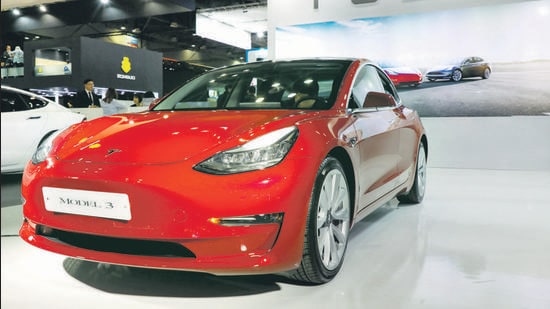Can a battery replace petrol in your next car?
Carmakers, infrastructure companies, and power suppliers are installing larger and fast chargers at public charging zones. These can charge an almost discharged EV battery up to 80% in around 60 minutes
Considered to be the future of mobility, electric vehicles (EVs) have become much-talked-about amid the rise in petrol and diesel prices. More choices are also now available in showrooms compared with a year ago. This has sped up the progression of EVs into genuine options for prospective buyers. But how do these really work, and how different are they from the cars with internal combustion engines that have been driven all along?

What exactly is an EV?
EVs are not plug-in hybrids or mild-hybrid powertrains, which are generally referred to as hybrid cars. A pure EV has batteries powering a motor, which gets the wheels moving instead of petrol or diesel. An EV can be plugged into a charger when this battery runs low on charge much like a phone or laptop. Instead of a fuel tank to fill up, you need to plug the car into a charger to charge the battery again.
How are EVs charged?
There will usually be three places where you would plug in your EV for charging—at home, work or along the way. This differs on the basis of carmakers. But users may get the option of a standard (slower) charger or a fast one by default. These can be connected to any 15 amperes (15A) power sockets. MG Motors India provides the option of the portable charger (charges 100% in up to 18 hours) as well as a fast charger (chargers 100% in up to 8 hours).
Carmakers, infrastructure companies, and power suppliers are installing larger and fast chargers at public charging zones. These can charge an almost discharged EV battery up to 80% in around 60 minutes.
How many km can an EV go on a single charge?
That depends first on the battery size and capacity. For instance, the Hyundai Kona has a 39.2 kWh (kilowatt-hour) battery and claims to have a range of around 452 kilometers per complete charge cycle. The Tata Nexon EV has a 30.2 kWh capacity battery with a range of around 312 km. The MG ZS EV has the largest battery size (44.5 kWh) and 419 km range.
How powerful are the electric motors?
Much like petrol and diesel cars, the higher up you go in the price range, the more power you will get. The MG ZS EV, for instance, delivers a maximum of 142.7 PS (or Pferdestärke, which is German for horsepower) while the Hyundai Kona delivers 136 PS of power. Tata has rated the Nexon EVs motor at 129 PS. The luxurious Jaguar I-Pace has about 400 PS of power.
Also Read | Amazon Fire TV 4K Max: Still offers more than Android TV streaming stick rivals
Yet, it is the delivery of the torque, which enables much faster acceleration than most petrol or diesel engines. The Kona is rated to deliver 395 nm (or newton-meter) of torque and claims to do a 0-100 km/h run in 9.7 seconds. MG claims the ZS EV can do the same in 8.5 seconds. Tata claims 9.9 seconds for the much more affordable Nexon EV. The Jaguar I-Pace is 0-100 km/h in 4.8 seconds.
EVs are nothing like hybrids?
EVs do not have an engine working alongside the battery power to move a car along. It is just the electric motor drawing power from the battery to drive you along. EVs do have a feature called regenerative braking, also known as kinetic energy recovery system, which captures some of the energy expended when the vehicle is braking or slowing down, to top up the battery. This may not be much in the larger scheme of things and would not necessarily drive up the remaining range on the same battery charge, but every ounce of charge matters when you are on the road.
Can an EV work for everyone?
EVs may not work for everyone. It is hard to imagine anyone driving more in a city daily than what these EV battery stats claim. You may experience battery anxiety if you get caught up in an unending traffic jam. For those who travel outside the town or long distances regularly, you will need to check if there are enough public charging points along the way. In case you need to top-up the EV battery during the journey—some routes and national highways would have it, most would not, at least yet.





